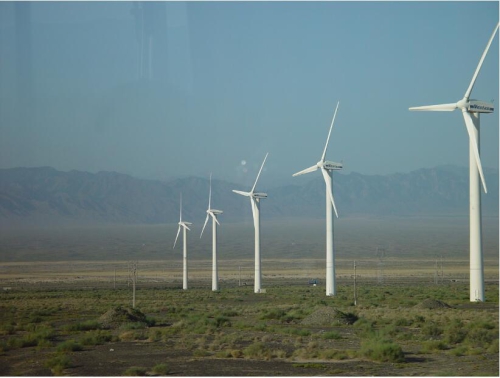
As climate change is becoming more and more a matter of concern, developing clean and renewable energy is significant for its contribution to reducing carbon emission to the atmosphere compared with fossil fuel.
In 2016, renewable energy contributes more than 19% to the global final energy consumption. Of all the renewable energy sources, wind is one of the key players in terms of installed electricity generating capacity, only exceeded by hydropower.
Wind energy is a natural resource characterized by instability. Previous studies mainly focus on the assessment of wind energy reserves, but it’s not clear how the wind energy evolves over time.

The Dabancheng wind farm in China's Xinjiang province. (Image by HUANG Gang)
Recently, researchers from the Institute of Atmospheric Physics (IAP) of the Chinese Academy of Sciences and their collaborator from Purdue University published a study focusing on the change in wind energy resources and models' simulation ability over the Northern Hemisphere.
The study revealed a widespread decline in wind energy resources over the Northern Hemisphere. Using station observation data, the researchers found that approximately 30%, 50% and 80% of the stations lost over 30% of the wind power potential since 1979 in North America, Europe, and Asia, respectively.
The study also revealed that global climate models (GCM) cannot replicate long-term changes on wind energy, indicating wind energy projections based on GCM simulations should be used with careful consideration to the model performance.
"Our study is one of the first comprehensive assessments of the GCM-based winds against surface observations over multiple continents. We found that the decline of wind energy is a widespread and potential global phenomenon. In addition, the finding that the climate models have a notable deficiency in simulating wind energy is an important conclusion that needs further attention," said TIAN, the lead author of the paper.

86-10-68597521 (day)
86-10-68597289 (night)

86-10-68511095 (day)
86-10-68512458 (night)

cas_en@cas.cn

52 Sanlihe Rd., Xicheng District,
Beijing, China (100864)

